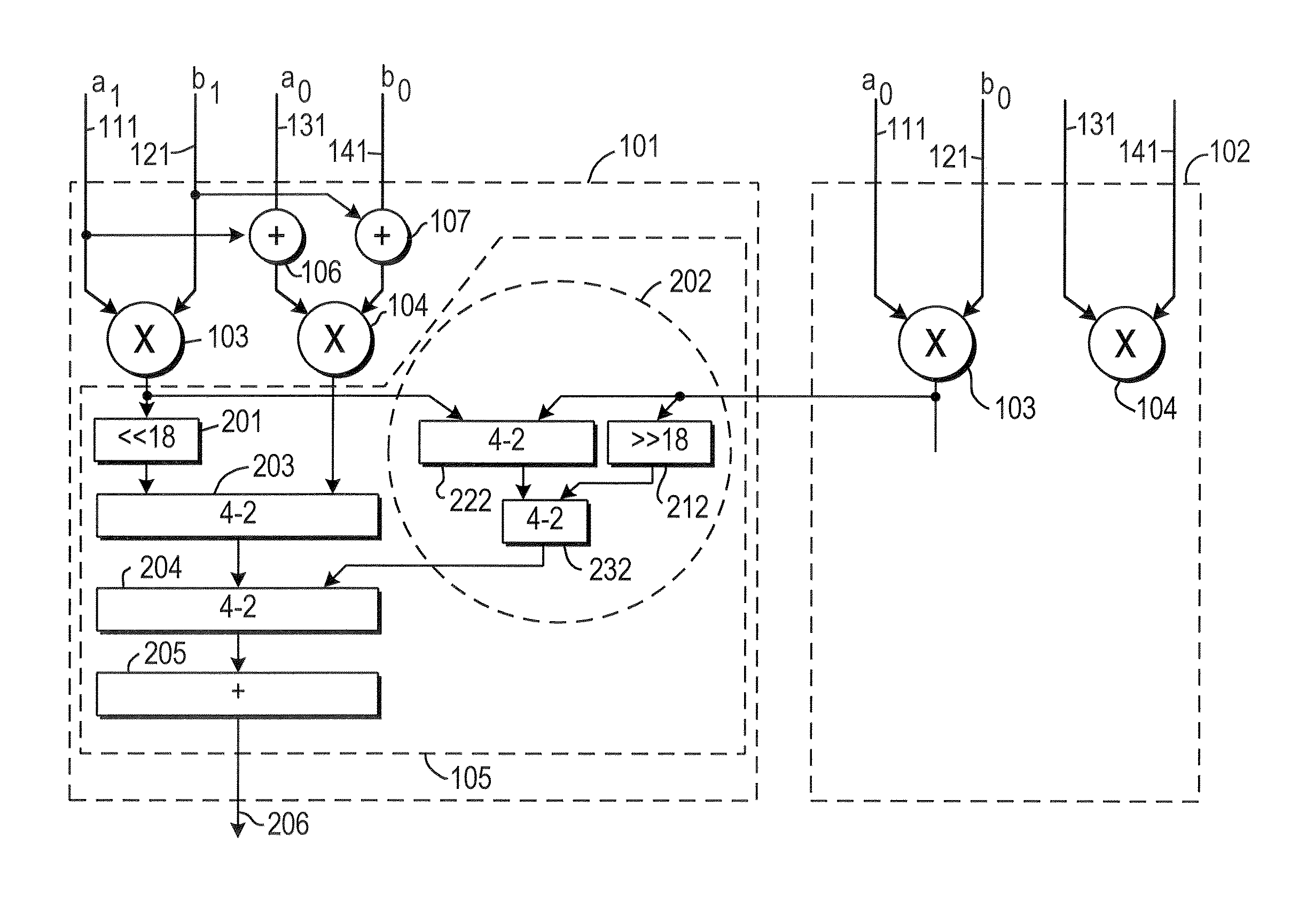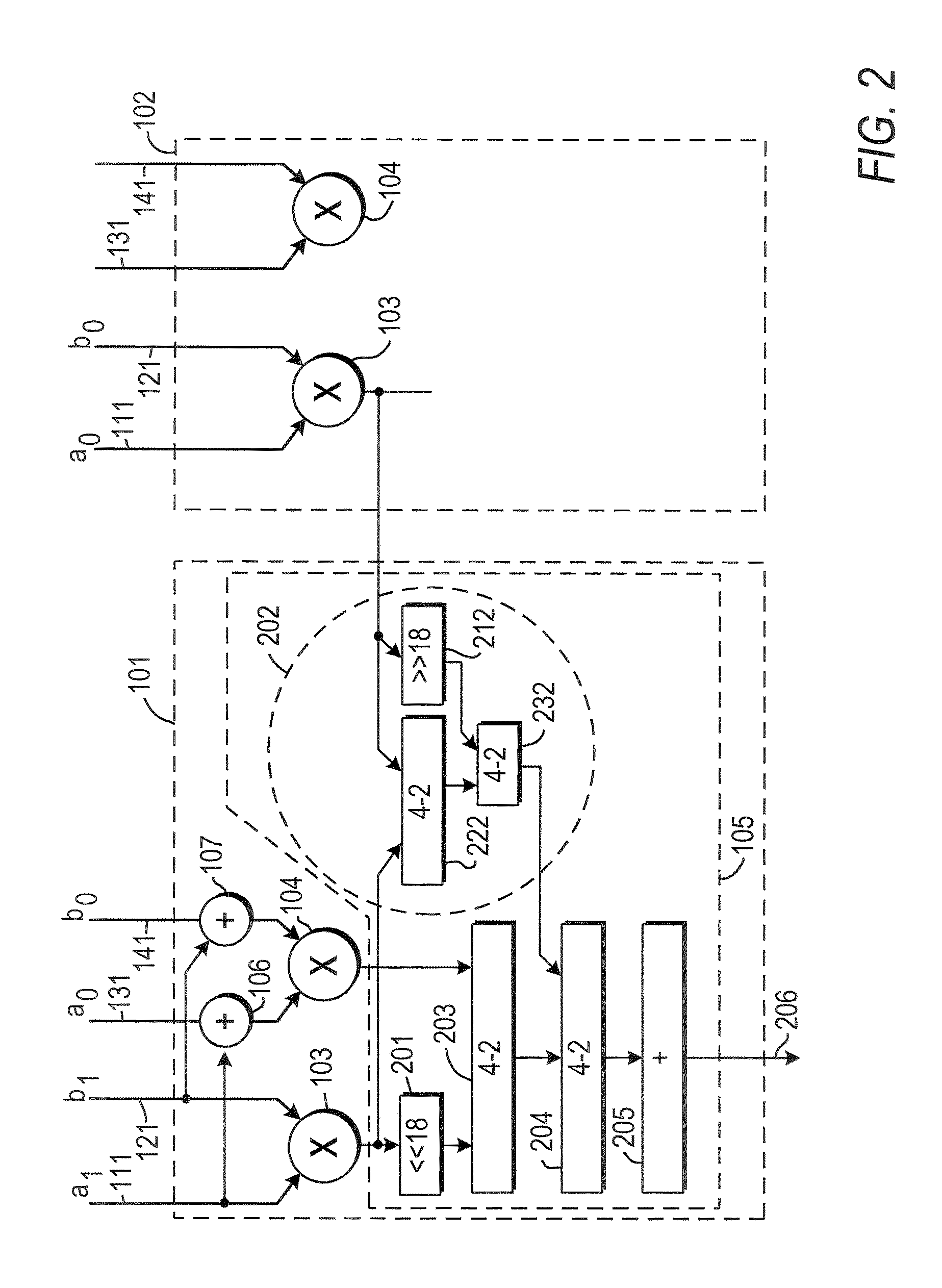Implementing multipliers in a programmable integrated circuit device
- Summary
- Abstract
- Description
- Claims
- Application Information
AI Technical Summary
Benefits of technology
Problems solved by technology
Method used
Image
Examples
Embodiment Construction
[0020]When a 36-bit-by-36-bit multiplication is implemented in 18-bit-by-18-bit multipliers using a linear decomposition, each of the two 36-bit operands a and b can be expressed as a set of two 18-bit numbers a1:a0 and b1:b0, so that their product M can be represented as follows:
M=(2xa1+a0)*(2xb1+b0)
The power-of-2 factors represent left-shifting by a number of places equal to the exponent. Expanding, the 36-bit-by-36-bit multiplication M is:
M=2xa1b1+2x(a1b0+a0b1)+a0b0
There are four unique terms anbm, so four multipliers are required.
[0021]Instead, however, in a recursive decomposition, such as the “Karatsuba multiplication” described, e.g., in Weisstein, E. W., “Karatsuba Multiplication,”MathWorld—A Wolfram Web Resource, http: / / mathworld.wolfram.com / KaratsubaMultiplication.html, the 18-bit components an, bm can be combined as follows:
A=(a1+a0)*(b1+b0)=a1b1+a1b0+a0b1+a0b0
Substituting A into the linear decomposition:
M=22xa1b1+2x(A−a1b1+a0b0)+a0b0
[0022]In this formulation of the co...
PUM
 Login to View More
Login to View More Abstract
Description
Claims
Application Information
 Login to View More
Login to View More - R&D
- Intellectual Property
- Life Sciences
- Materials
- Tech Scout
- Unparalleled Data Quality
- Higher Quality Content
- 60% Fewer Hallucinations
Browse by: Latest US Patents, China's latest patents, Technical Efficacy Thesaurus, Application Domain, Technology Topic, Popular Technical Reports.
© 2025 PatSnap. All rights reserved.Legal|Privacy policy|Modern Slavery Act Transparency Statement|Sitemap|About US| Contact US: help@patsnap.com



